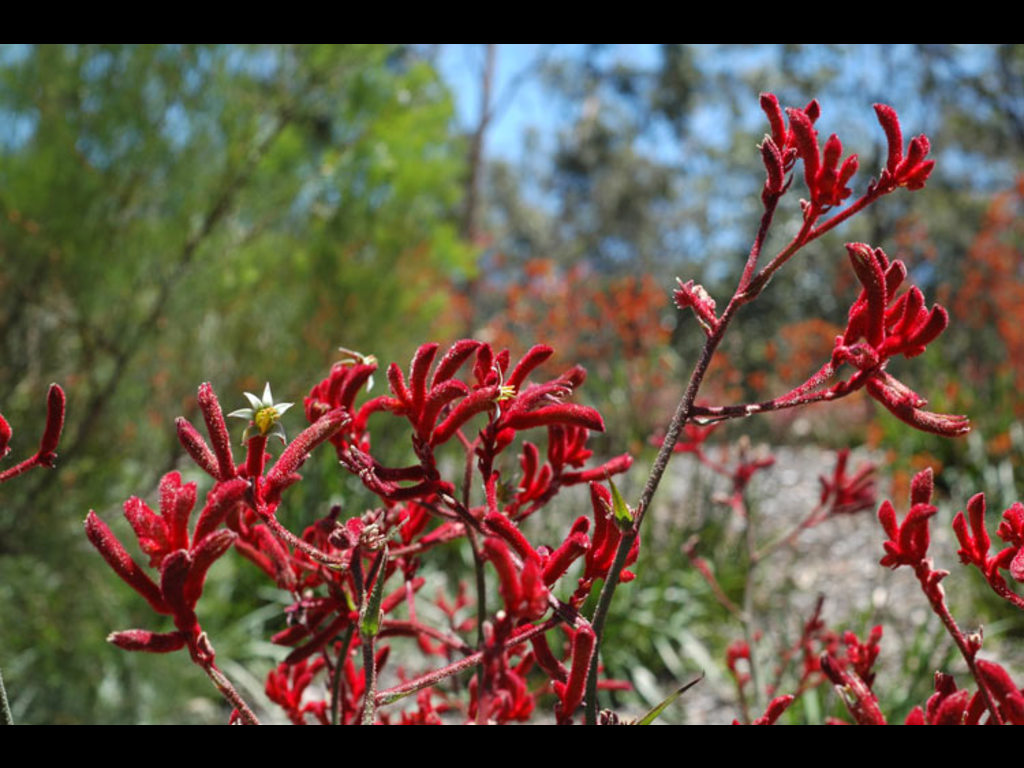Anigozanthos 'Big Red'
- File Number
- 220
- ACRA Field Book Number
- 15
- Registration Date
- 07/10/1990
- Application Received
- 01/10/1983
- Family
- Haemodoraceae
- Cultivar Name
- Anigozanthos 'Big Red'
- Origin
- Anigozanthos 'Big Red' is the result of a manipulated hybrid between (A. manglesii x A. flavidus tetraploid) x (A. rufus x A. flavidus tetraploid). The cross was performed by Mr K R Oliver of Western Australia. The cultivar was first received by the Authority in October 1983. Registration applied for by K R Oliver of Parkwood, Western Australia.
- Characteristics
- Flowering stems are from 1.5 to 2m tall, glabrous or nearly so below the middle, with scattered plumose hairs becoming more dense under the inflorescence. Panicle divaricately branched, bearing flowers in unilateral racemes with an acuminate bract under each branch. Flowers on pedicels to 12mm long, usually less. The wool is plumose and very dense, reed on the outside of the perianth tube, tinged with black on the lobes. The perianth tube is ca. 4.5cm long, glabrous and shining but minutely scabrous inside. Lobes are ca. 13mm long with dense stellate hairs inside. Anthers are oblong-linear, more or less as long as the filaments, the connective tipped with a small glandlike appendage. Ovules are more than 10 per locule. Diagnosis: The flowers of Anigozanthos 'Big Red' have the colouring of A. rufus but are a darker, richer red. They are similar in length to A. flavidus but are wider and shaped more like A. rufus. The ovary is prominent like that of A. flavidus. Anigozanthos 'Big Red' is more floriferous than A. flavidus and A. manglesii and less branched than A. rufus, appearing closer in habit to A. flavidus. The stems are not as hairy as A. rufus or A. manglesii but have more hair than A. flavidus.
- Cultivation
- This cultivar is Ink Disease resistant and is not badly affected by slugs or snails. It is semi-hardy to drought and flowers form September to December in Western Australia. It has been in cultivation since 1971. The cultivar has performed well in Brisbane where most Kangaroo Paws succumb to the humidity.
- Publication
- "Australian Horticulture" September 1985 page 109.
- Colour Coding
- RHS Colour Chart 1966.Flowers: hairs on perianth tube: red group 53A. Note that the varying density of hairs allows the background colour to show through giving an overallcolour close to greyed purple 187A/B.inside perianth tube: yellow green group 145C.anther: yellow group 11A/b.filament: yellow green group 145A.
- Propagation
- Division or tissue culture
- Applicant Name
- K. Oliver
- Uses
- As part of a mass planting or mixed in a shrubbery, or as a spectacular feature plant. Attracts nectar feeding birds.
- Availability
- Specialist native plant nurseries
- ANBG Accession Numbers
- ACC220; ACRA015; CBG8312954.
- NSL ID
- -

